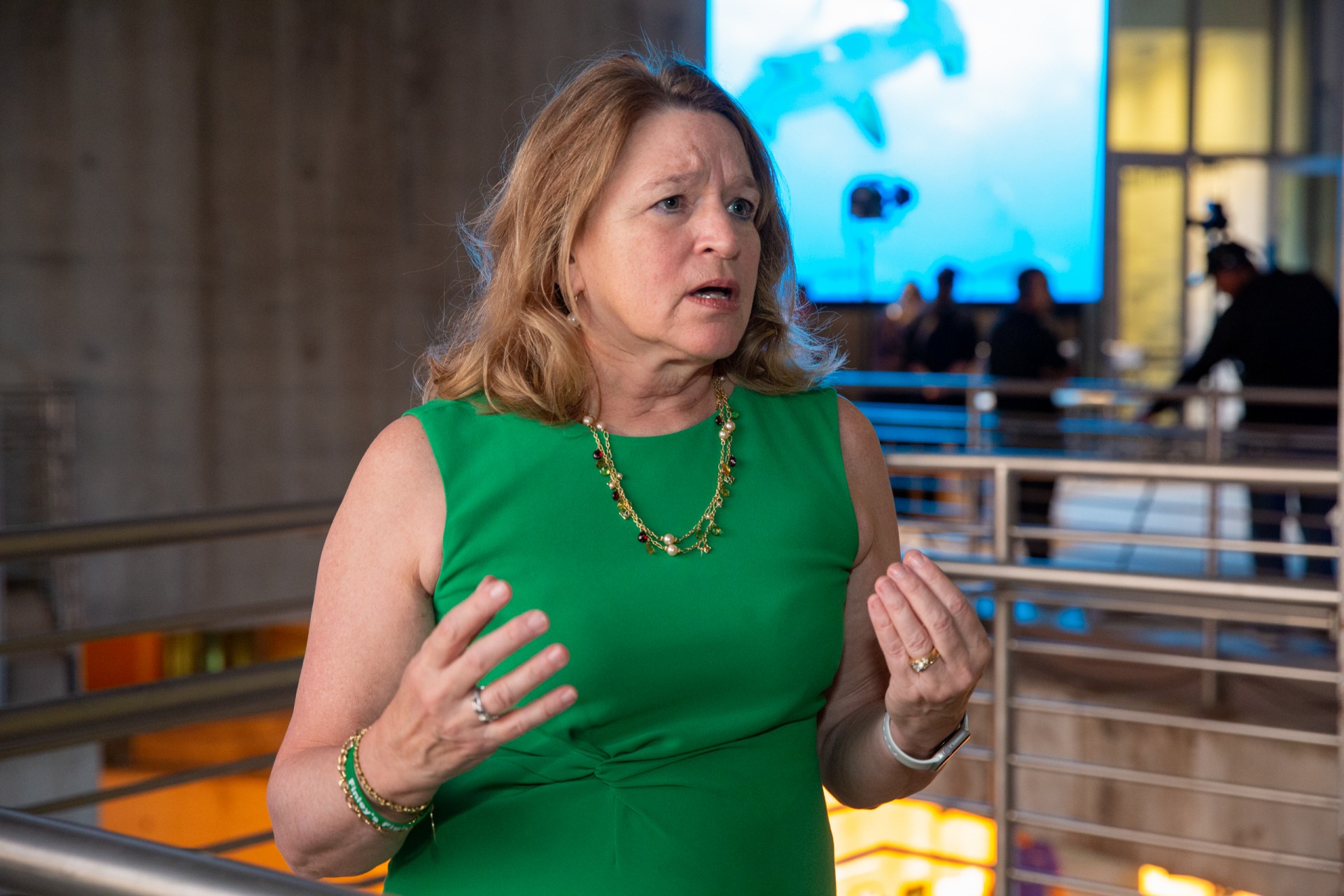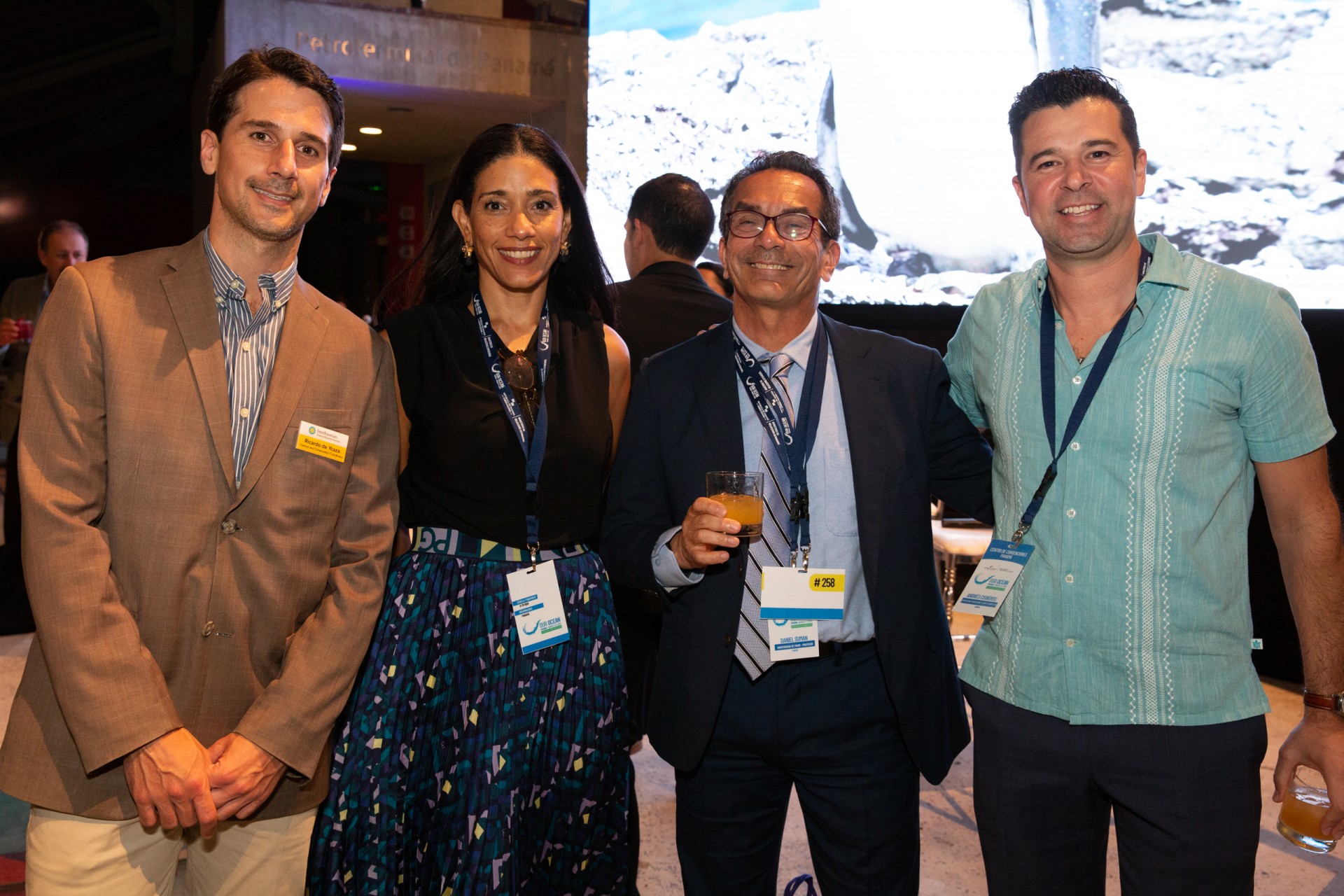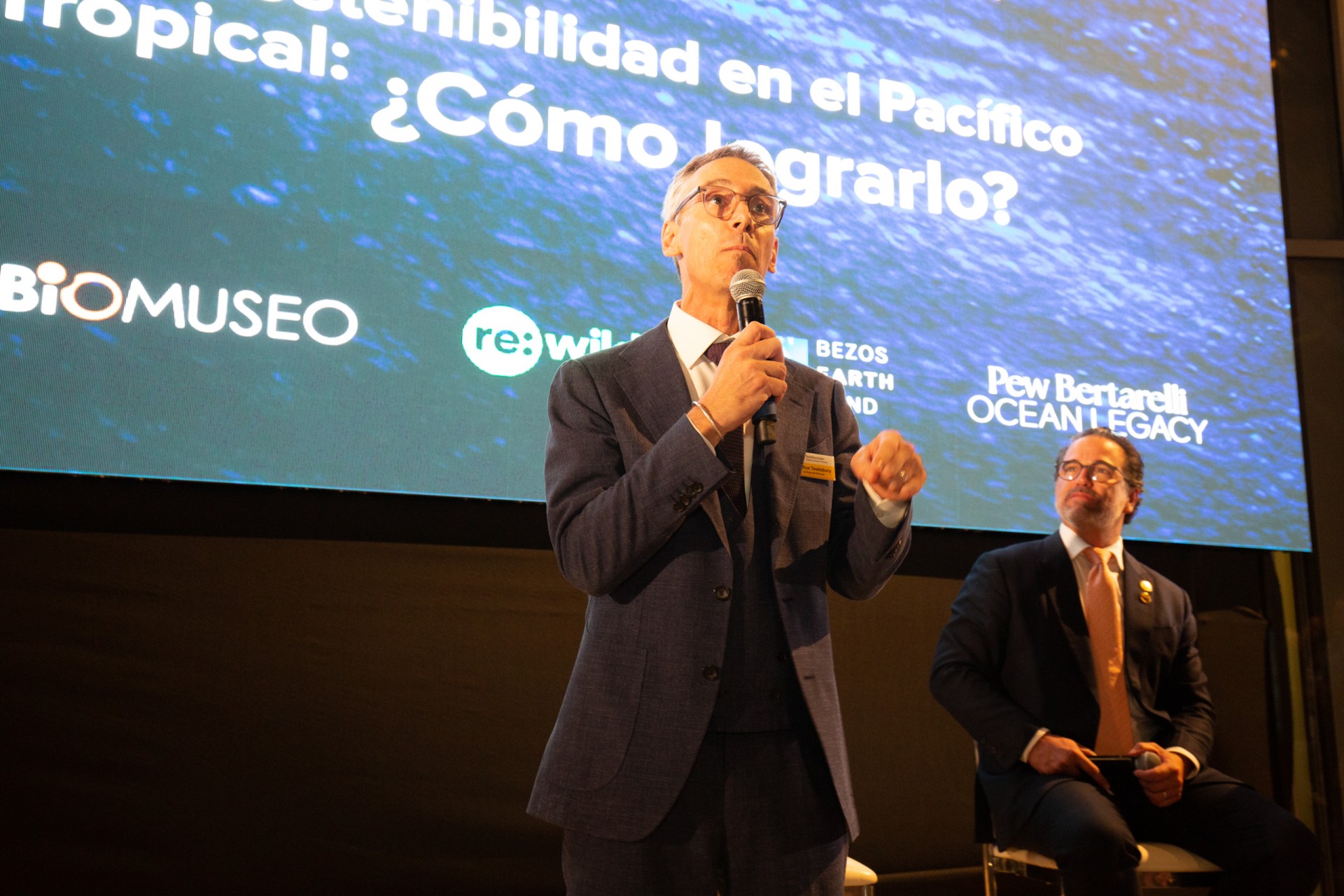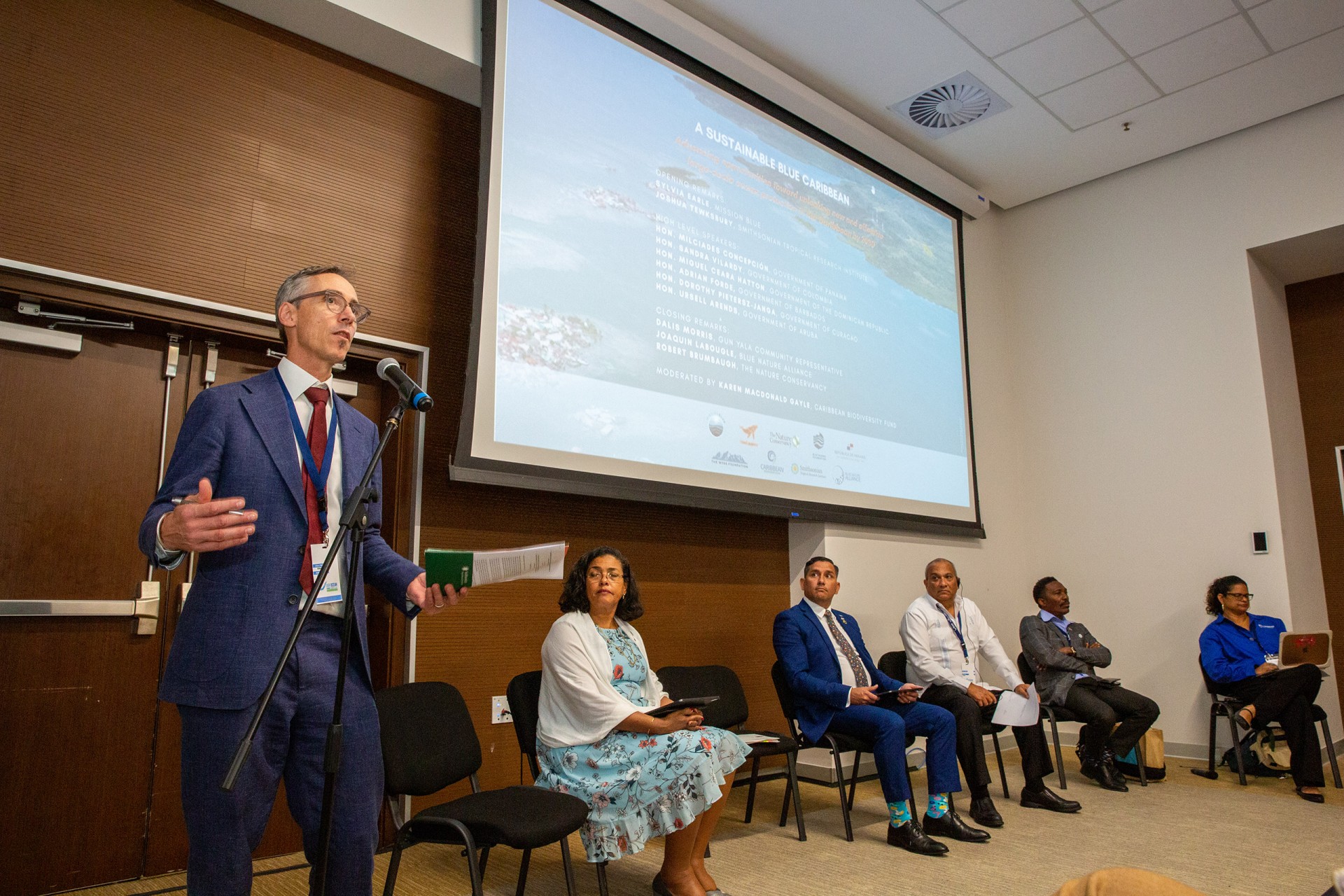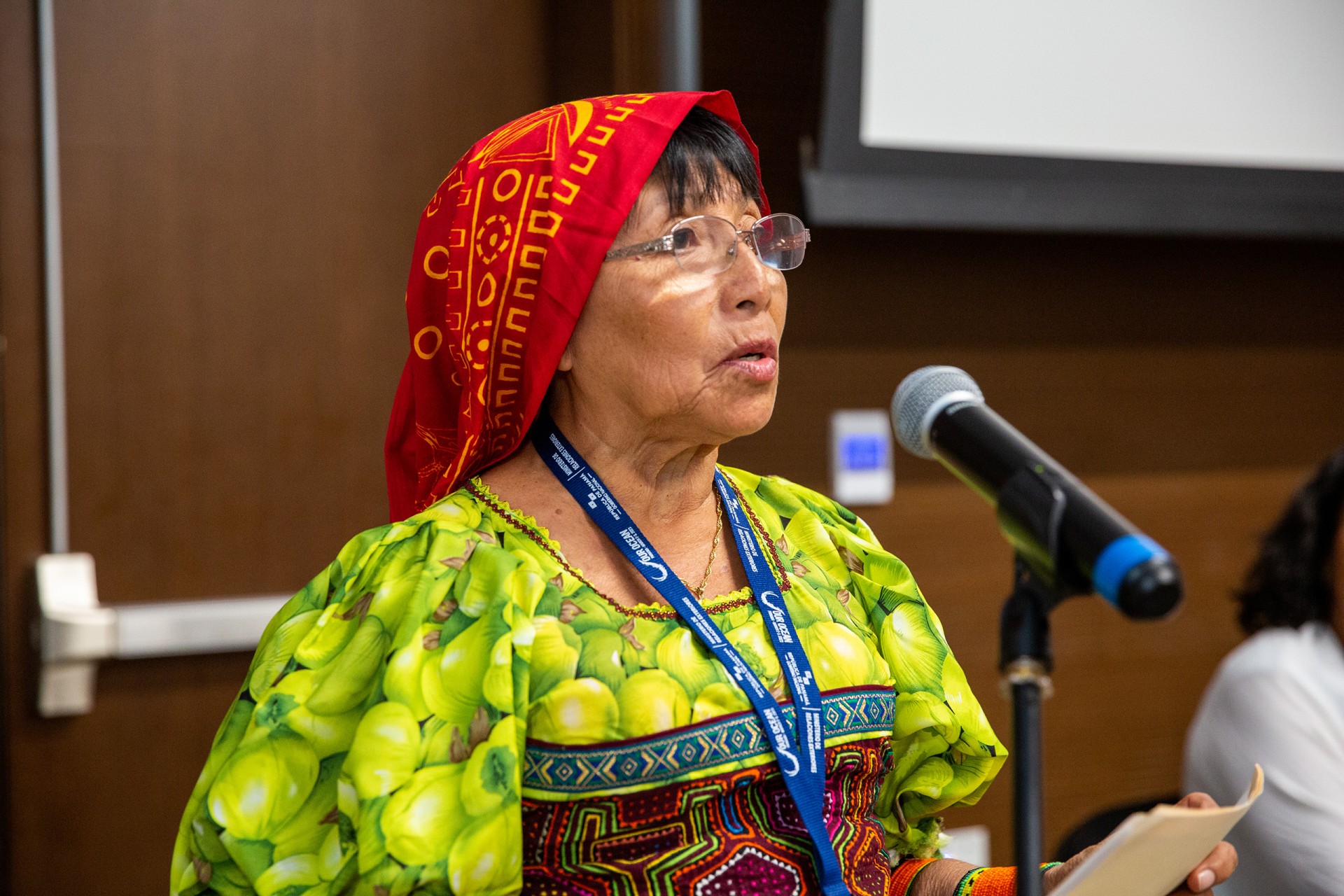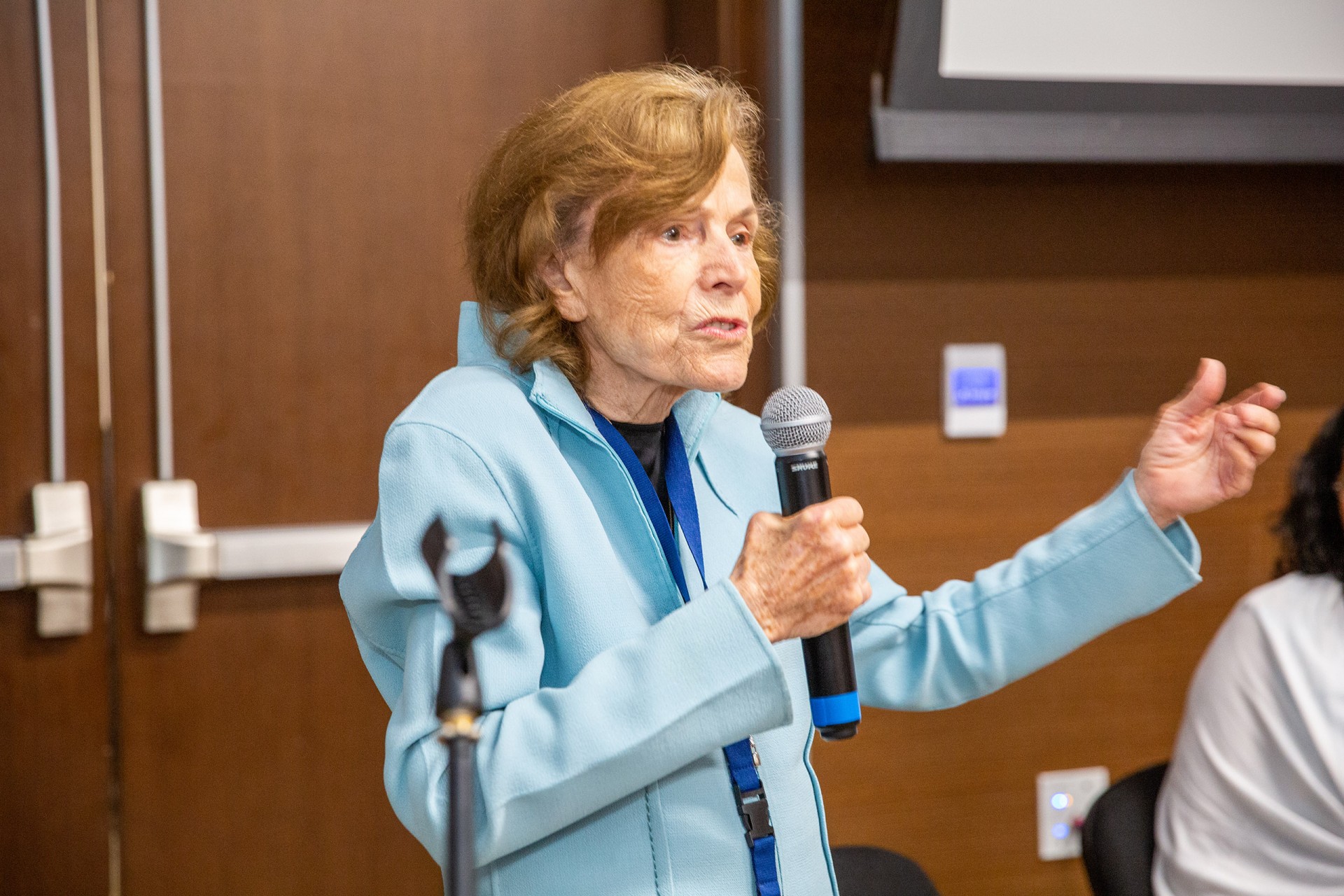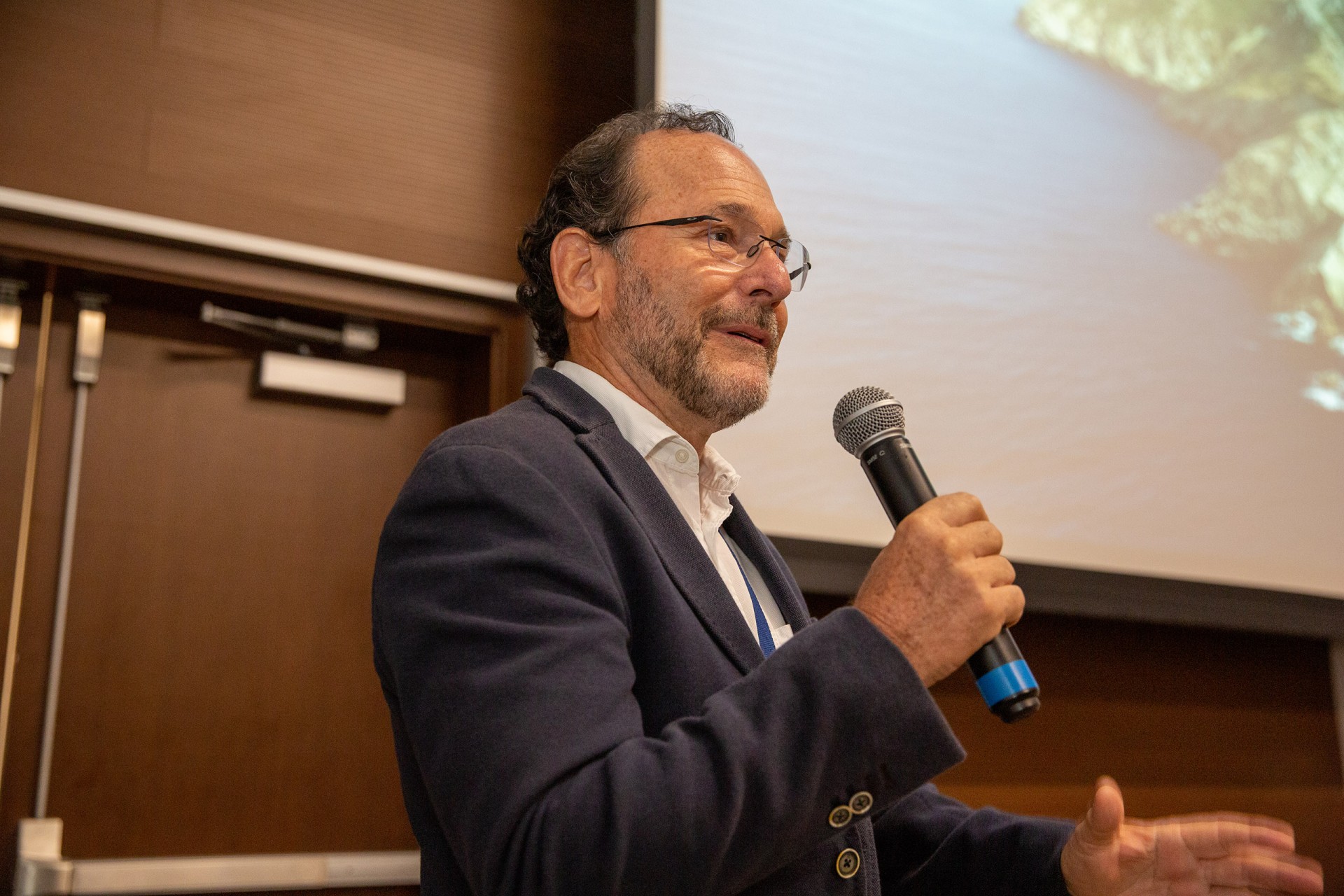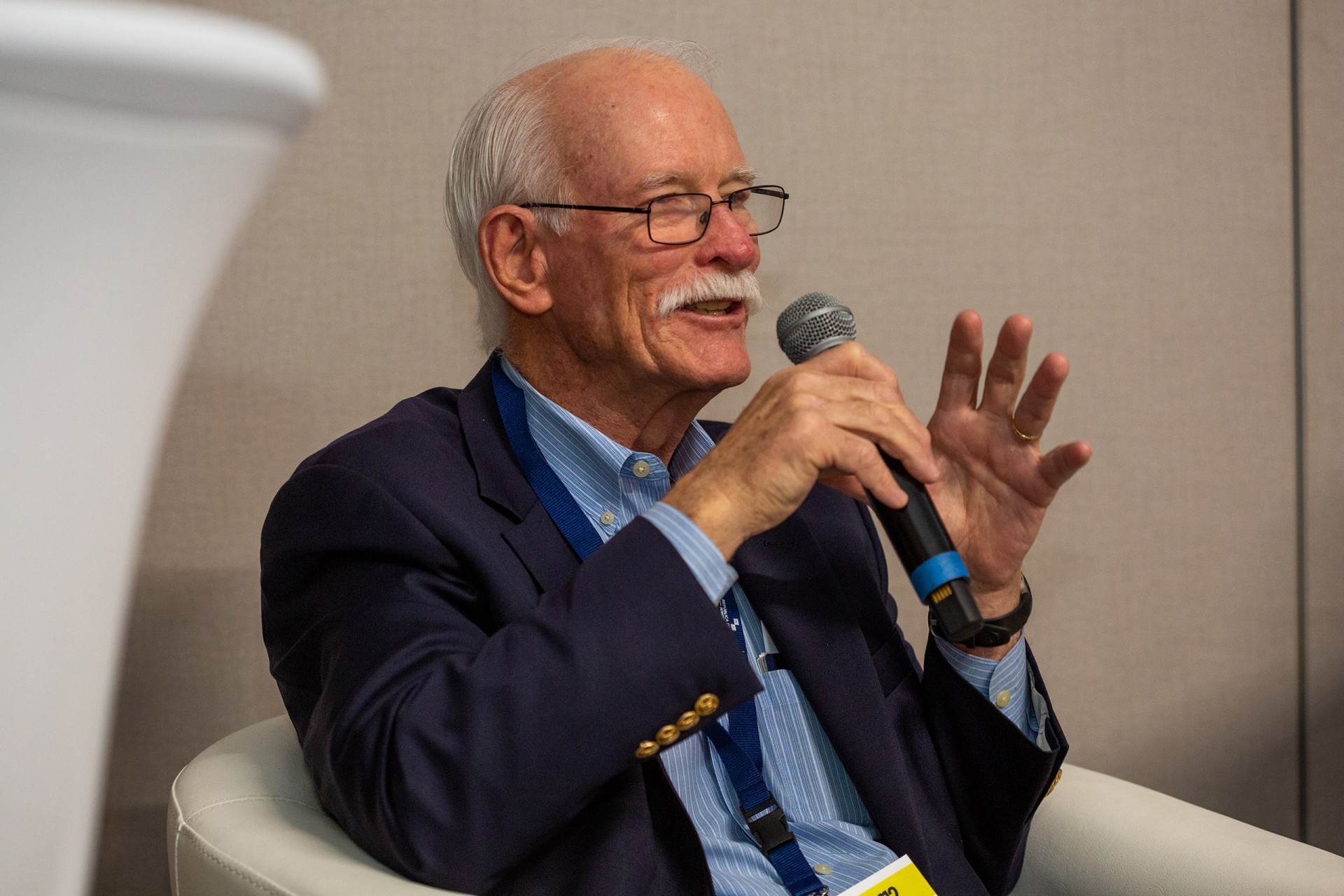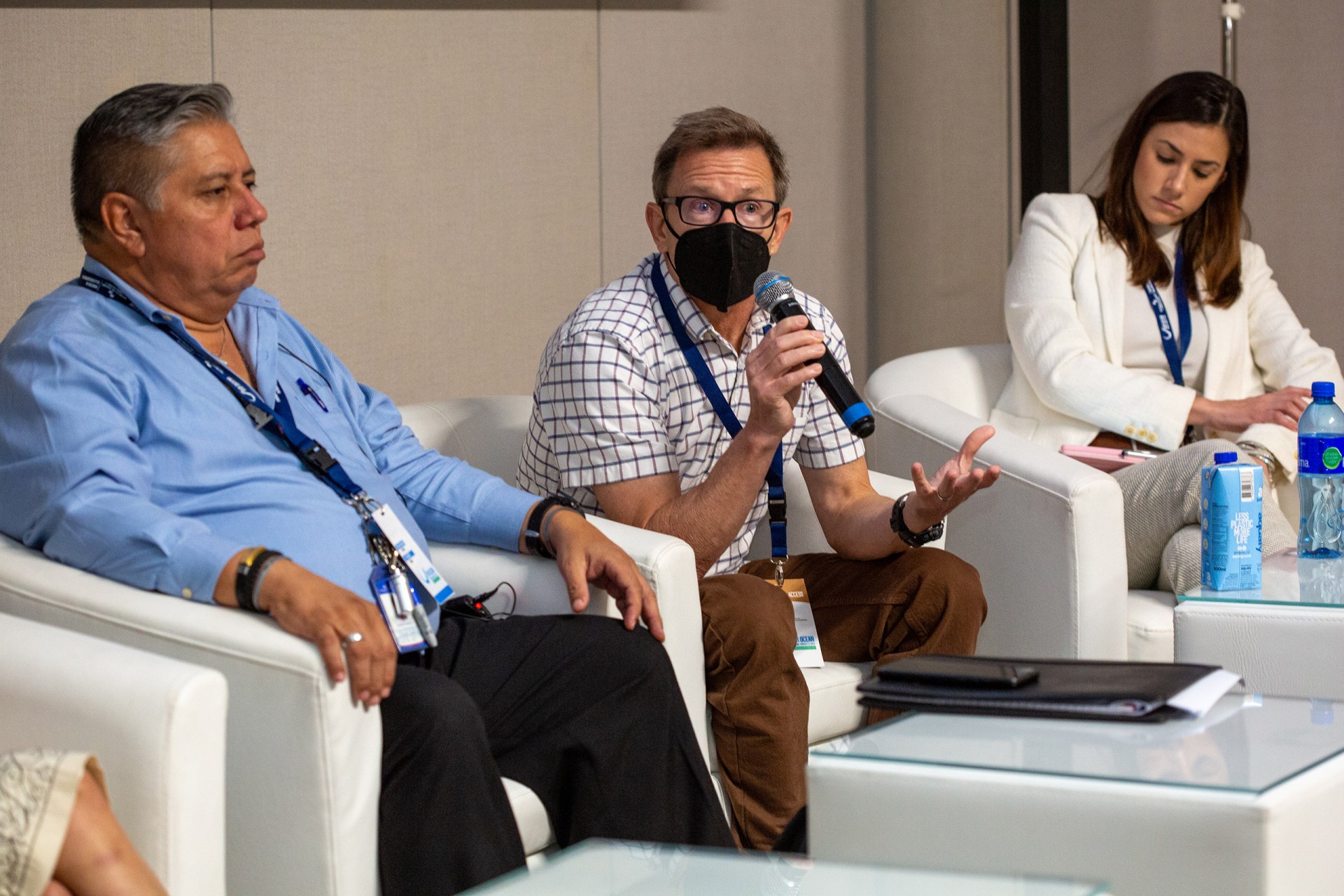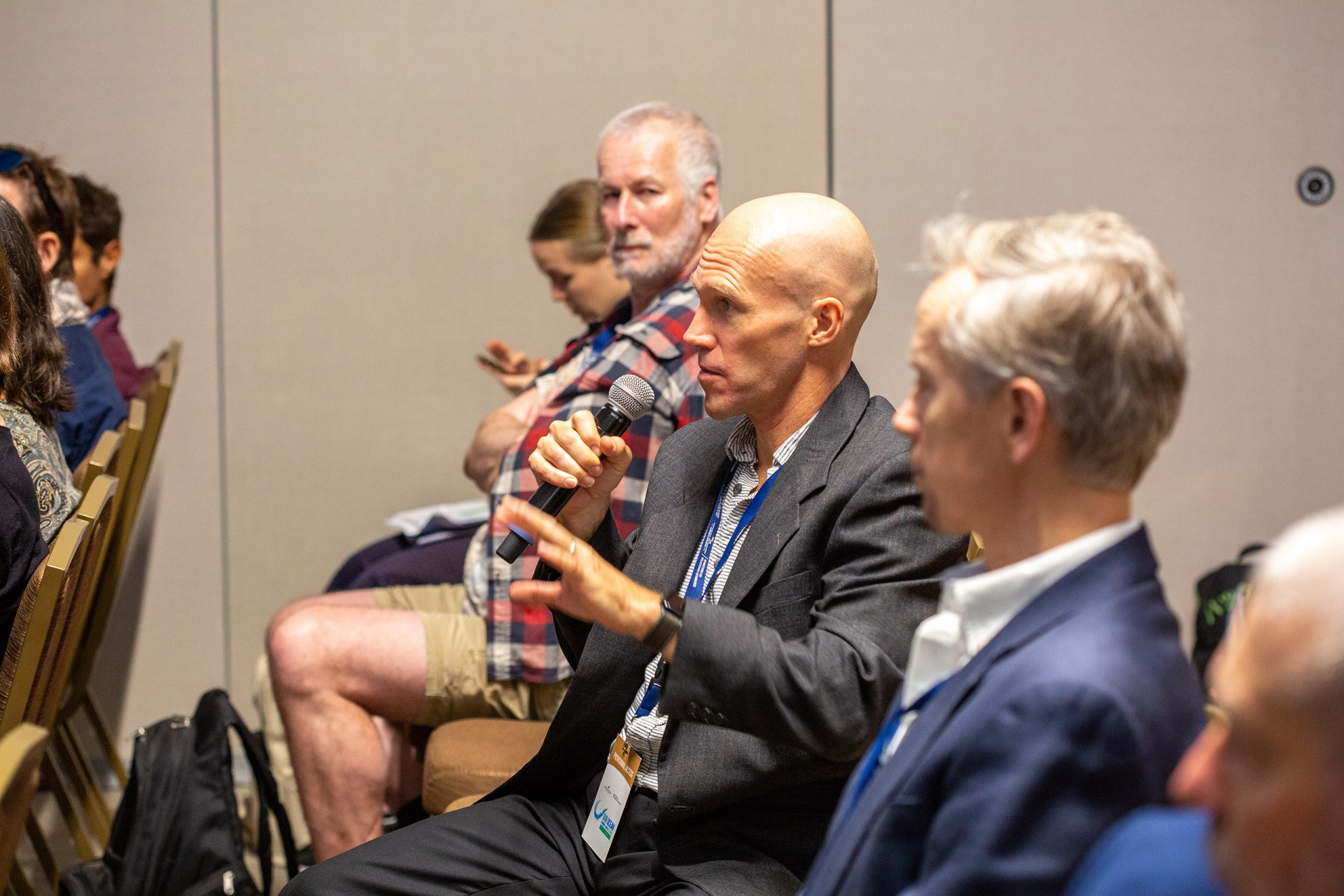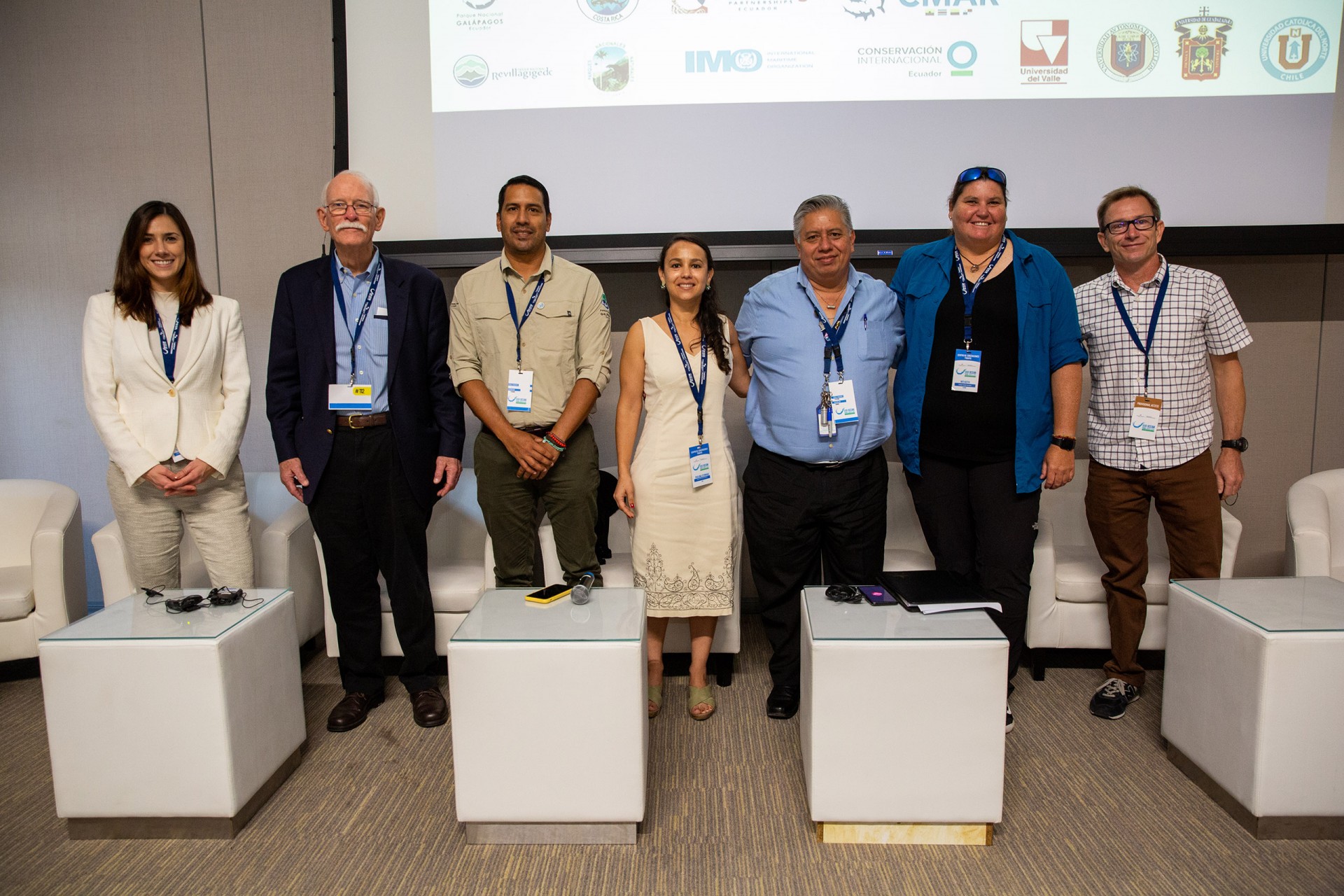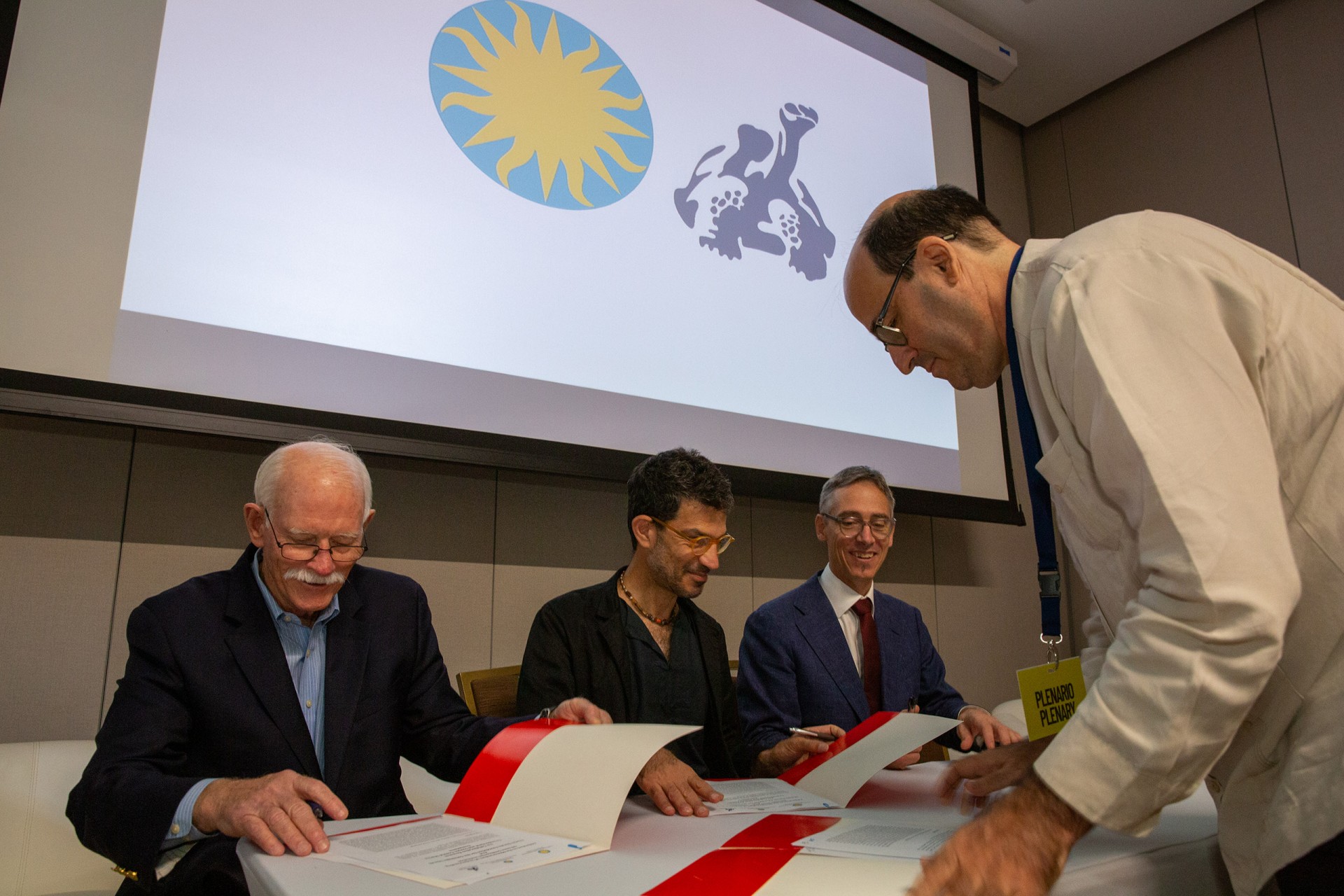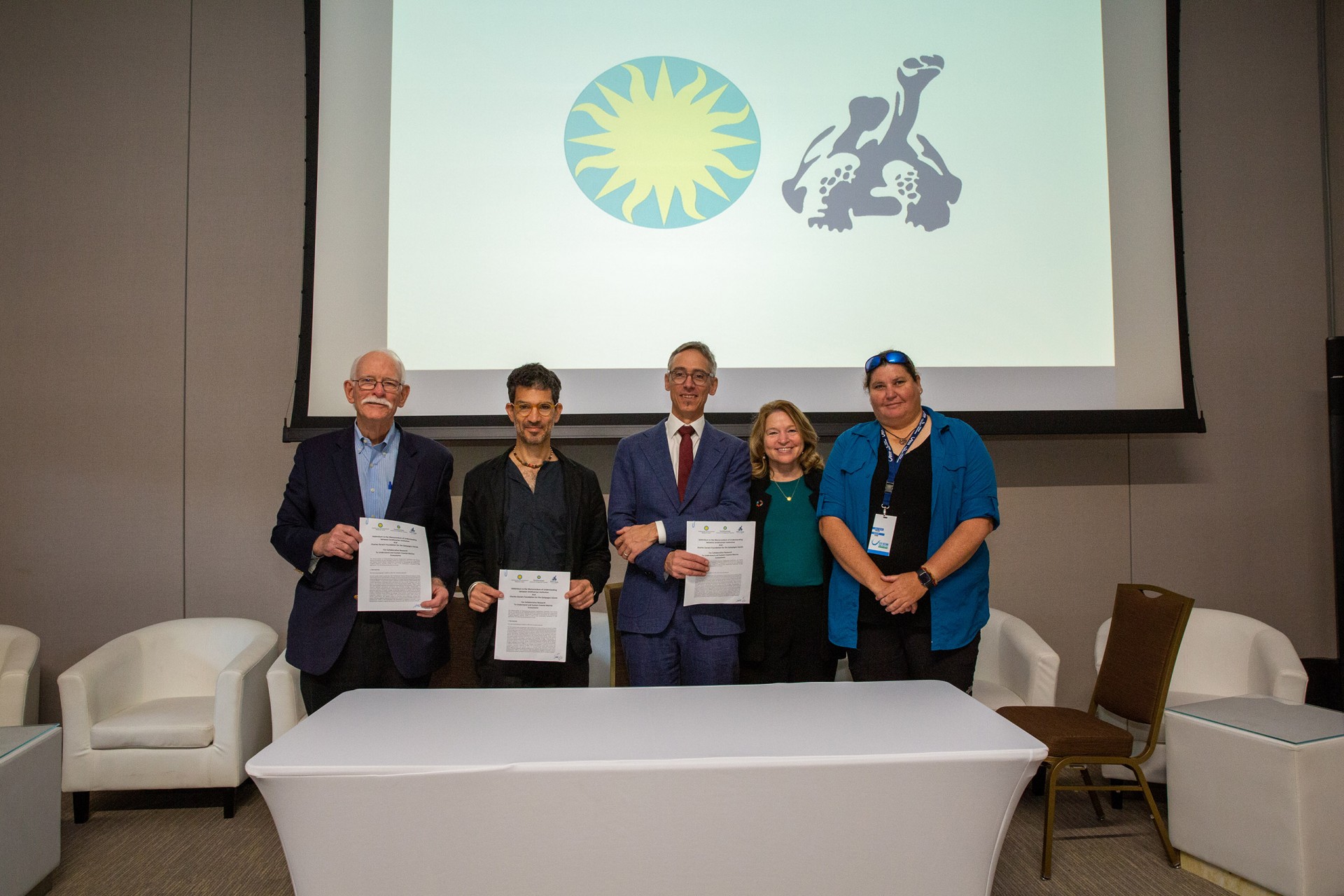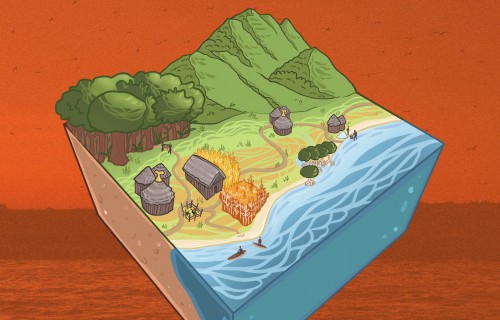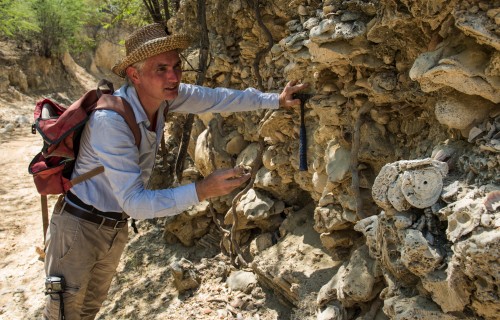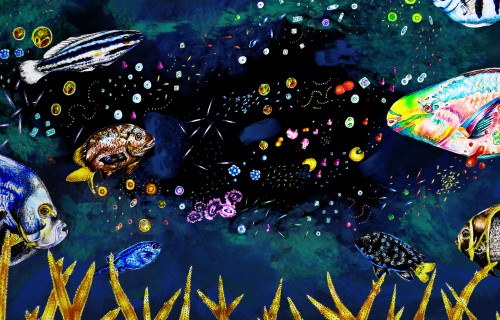Smithsonian science helps understand blue whale migratory and foraging patterns to inform conservation strategies
Our Ocean,
Our Connection
Commitments, partnerships, and hope: The Smithsonian at the Our Ocean Conference in Panama
Text by Leila Nilipour
The 8th Our Ocean Conference concluded with 341 commitments worth nearly $20 billion, including the expansion of Banco Volcán Managed Resources Area in the Panamanian Caribbean that led Panama to protect over 54% of its oceans.
During the first week of March, Panama became the first Latin American country to host an Our Ocean Conference, a two-day meeting convening representatives of government, civil society, philanthropy and scientific sectors from around the world to discuss the future of our marine and coastal ecosystems. Smithsonian Institution scientists and representatives were present as attendees, moderators and panelists, including the SI Under Secretary for Science and Research, Ellen Stofan; Smithsonian Environmental Research Center Director, Tuck Hines; Smithsonian Tropical Research Institute (STRI) Ira Rubinoff Director Joshua Tewksbury, and STRI marine researchers Héctor Guzmán, Ana Spalding, Mark Torchin, Rachel Collin, and Matt Leray, among others.
The government of Panama made an important commitment during the 8th Our Ocean Conference inauguration ceremony, expanding the Banco Volcán Managed Resources Area in the Panamanian Caribbean from 5,487 square miles to about 36,058 square miles, a decision based on STRI science that led the country to protect over 54% of its oceans. Safeguarding the unique natural resources of Banco Volcán will help buffer climate change and protect Panama's deep-sea mountain environments and fauna from human interventions, including several fish and invertebrate species of high commercial value that represent an important sustainable resource for indigenous and Afro-Caribbean coastal communities.
“A living planet makes our existence possible,” said Mission Blue founder and renowned marine explorer, Sylvia Earle. “We are all witnesses to the greatest era of change in all of human history. It is also the greatest time of opportunity because of what we now know,” she added, prior to the panel “Marine Protected Areas (MPAs): Expanding the Protection of Our Ocean”, moderated by STRI director Joshua Tewksbury.
"While human activities have led to many of the challenges we face today, I’d like to offer an alternative focused on human innovation, creativity, collaboration and inclusion as pathways for change,” said Tewksbury. “I’d like us to shift the narrative from crisis to opportunity.”
Some of the panelists included Cristian Samper, Director general and leader of Nature Solutions at the Bezos Earth Fund, Michaela Dommisse, Head of Research and Marine Innovation at Minderoo Foundation and Maximiliano Bello, Advisor for Global Ocean Policy at Mission Blue.
They reflected on the importance of partnerships and coalitions for the protection of our oceans, as well as the need for good science and an understanding of local contexts to ensure marine protected areas connect animal migration routes, replenish fisheries, are inclusive of local communities and protect endemic and endangered species. Another crucial aspect revolved around the need for financing and technology to ensure that MPAs are really monitored and protected.
“It all seems to start with people that decide that change is needed, and that change seems absolutely impossible, until it is not,” said Dommisse. “Committed individuals like yourselves can lead to great change.”
The first evening of the Conference, STRI, Re:Wild, the Pew-Bertarelli Ocean Legacy and the Bezos Earth Fund hosted a distinguished group at Panama’s BioMuseo to celebrate their commitment to conserve a sustainable and resilient Tropical Eastern Pacific Ocean (TEP).
The Honorable John Kerry, United States Special Presidential Envoy for Climate, shared the stage with Joshua Tewksbury; Janaina Tewaney Mencomo, Panama’s Minister of Foreign Affairs; Gustavo Enrique Miranda, Ecuador’s Minister of the Environment; and Andrew Steer, President and CEO of the Bezos Earth Fund; Zdenka Piskulich, Director of Enduring Earth; and master of ceremonies, Patricia Leon, Joint Program Manager for ETP, Re:Wild and the Bezos Earth Fund.
The event kicked off with a video announcing that the Connect to Protect Eastern Tropical Pacific Coalition of individuals, organizations, governments, indigenous groups and scientific researchers has pledged to find $150 million in private and public funds to conserve the Tropical Eastern Pacific Marine Corridor (CMAR), a vibrant seascape that connects Cocos Island in Costa Rica with Coiba (Panama), Malpelo (Colombia) and the Galapagos (Ecuador) and to address the challenges it faces: pollution; illegal, unlawful and unreported (IUU) fishing; climate change; and invasive species.
Héctor Guzmán, STRI staff scientist and co-founder of the MigraMar network, participated in the side-event “Advancing marine conservation in the Eastern Tropical Pacific Marine Corridor Through Science and Collaboration”, alongside representatives from Re:wild, Bezos Earth Fund, Global Fishing Watch and Pew Bertarelli Ocean Legacy. Credit: Jorge Alemán, STRI.
Tewksbury made a plea for a new research vessel so that scientists can work throughout the TEP and connect with the coastal communities as well. He added that STRI will build brand new marine facilities to house this effort and train the next cohort of local and global ocean science leaders. He reinforced this commitment on the second day of the Conference, during the opening remarks of a side event titled “A Sustainable Blue Caribbean”.
“We’re committed to doing the science to back the action steps proposed at this conference: to stop ocean pollution, to develop community-based tourism, and to create fair, smart ocean policy to protect our shared future and move toward a sustainable planet where people live harmoniously with nature”, he said.
The side event included a series of representatives from governments of Caribbean nations, who discussed strategies for the large-scale protection of their shared ocean, as well as Panama’s Minister of the Environment Milciades Concepción who highlighted STRI’s support for the creation of MPAs on both sides of the country. It also included Dalis Morris, a representative from the Guna Yala archipelago in the Panamanian Caribbean, the home of indigenous islanders that is threatened by rising oceans.
“We have always considered nature our ally, we only take what is essential from it,” Morris said. “The people who contribute the least to climate change, we are now among those most affected by Mother Nature's wrath.”
Sylvia Earle, who was present at the side event, gave some closing remarks: “Follow the lead of Panama. Follow the lead of countries in the TEP. It's becoming fashionable to protect the ocean, why not? It's the right thing to do. Our economies and livelihoods depend on it, but mostly our lives depend on it."
At another side event co-hosted by MigraMar, Re:Wild, the Pew-Bertarelli Ocean Legacy, the Bezos Earth Fund and Global Fishing Watch, Héctor Guzmán, STRI marine biologist and co-founder of MigraMar, who contributed to the scientific research behind the Banco Volcan MPA expansion, outlined what is needed to support more science in coastal areas and oceanic islands: “A well-coordinated team working to produce the best science possible, genuine political will to put the science ahead and enough funding to keep doing science.”
The second day of the Conference was also the platform for the signing of a new Memorandum of Understanding between STRI, the Smithsonian Environmental Research Center (SERC) and the Charles Darwin Foundation in Galapagos, to conduct collaborative research in coastal marine ecosystems along the TEP relating to biological connectivity and migratory species; monitoring movement and tracking breeding biology; mapping the biogeography of seamount diversity; coral reef resilience; climate, carbon and conservation; oceans and people; assessing the resilience of coastal communities and understanding science to policy pathways.
The 8th Our Ocean Conference concluded with 341 commitments worth nearly $20 billion. Since the first Our Ocean Conference in 2014, participants from over 70 countries have announced more than 1,800 commitments worth more than $108 billion and protected more than five million square miles of ocean.

